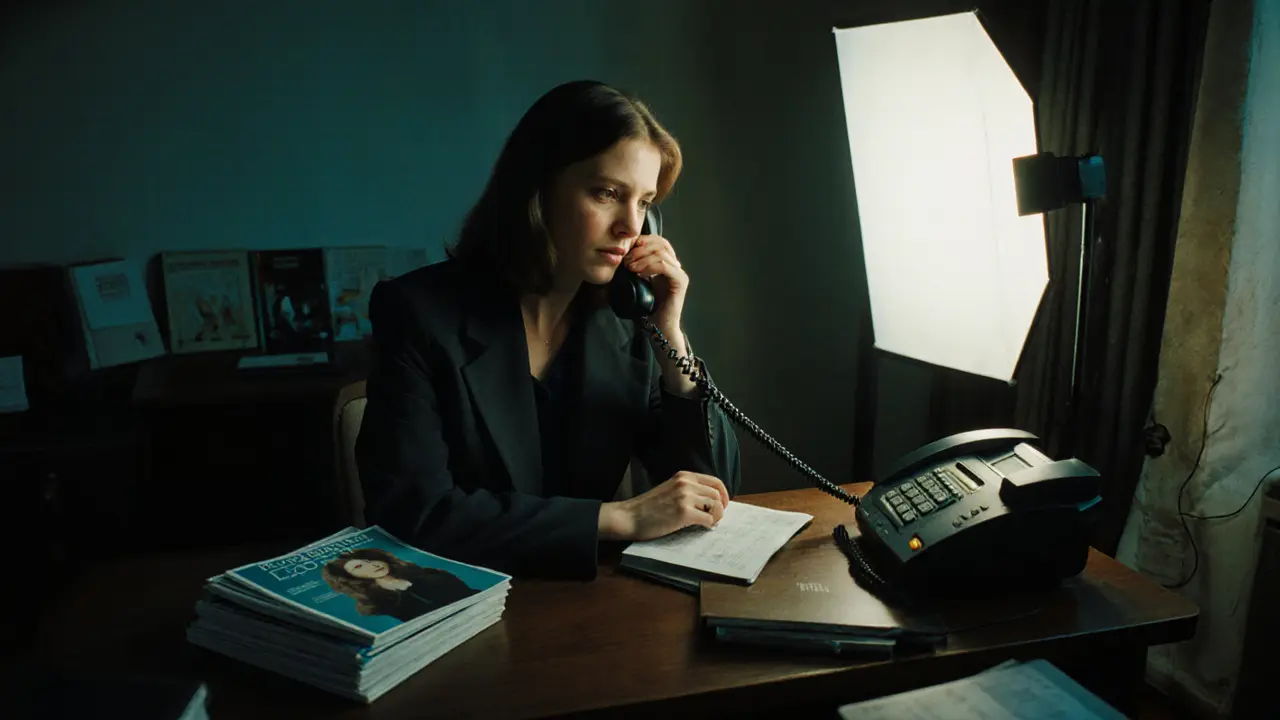The Evolution of the Escort Industry in London: From Secret Societies to Modern Services

Nov, 16 2025
Before the 1980s, if you wanted to hire an escort in London, you didn’t open an app. You didn’t scroll through Instagram profiles or read verified reviews. You relied on word of mouth, trusted networks, or a discreet phone call to a number you’d been given by a friend who knew someone. The escort industry in London didn’t start with digital marketing-it started with silence.
Origins in the Shadows: 18th and 19th Century London
The first recorded instances of paid companionship in London date back to the 1700s, when wealthy merchants and aristocrats hired women to accompany them to social events. These weren’t just sexual services-they were status symbols. A man seen with a well-dressed, articulate woman at a ball signaled wealth, taste, and influence. The most famous of these women were called ‘kept mistresses,’ often living in grand houses in Mayfair or Belgravia, funded by lovers who provided them with jewelry, carriages, and servants.
Unlike today’s independent contractors, these women had no legal protection. They were vulnerable to exploitation, public shaming, and arrest under laws like the 1857 Contagious Diseases Acts, which targeted women suspected of prostitution but ignored their male clients. The stigma was brutal. Many of these women came from poverty, and their work was one of the few ways to escape it-even if it meant losing their place in society.
The Underground Era: 1900-1970
By the early 1900s, the escort trade had moved underground. Brothels were shut down after the 1959 Street Offences Act, but demand didn’t disappear. Instead, it adapted. Women began working independently, often from rented flats in Soho, Knightsbridge, or Notting Hill. Phone lines became the new lifeline. Advertisements appeared in classifieds under vague terms like ‘companion for evening’ or ‘lady for hire.’
Police turned a blind eye if the service stayed discreet. The key was avoiding public scenes. A woman who was seen arguing on the street or accepting cash in a pub risked arrest. But if she met clients in private, paid her rent on time, and kept her door locked, she could operate for years without trouble. Many of these women were single mothers, war widows, or immigrants who had few other options. They weren’t criminals-they were survivors.
The 1980s and 1990s: The Rise of the Agency Model
The 1980s brought a shift. Agencies started appearing, offering more structure. These weren’t brothels-they called themselves ‘dating agencies’ or ‘companion services.’ They handled bookings, screened clients, set rates, and sometimes provided security. For the first time, escorts had a degree of professionalism. Rates jumped from £50 to £300 per hour. Some agencies even offered training in etiquette, conversation, and personal grooming.
But control came with a cost. Agencies took 40-60% of earnings. Many women resented the cut, but the trade-off was safety and steady work. The most successful agencies operated like boutique hotels: clean apartments, professional photos, background checks on clients. They didn’t advertise in newspapers-they used private directories, fax machines, and later, early online forums.
By the late 1990s, London had become one of Europe’s largest markets for escort services. The city’s global reputation, its mix of wealth and anonymity, and its lax enforcement made it ideal. The industry wasn’t legal, but it was tolerated.

The Digital Revolution: 2000-2020
The real transformation came with the internet. In 2005, websites like London Escorts and Adzuna began listing profiles. Suddenly, anyone with a camera and a laptop could enter the market. No more agencies. No more middlemen. Women could set their own prices, choose their own hours, and screen clients with Google searches and social media checks.
Platforms like Backpage (before its 2018 shutdown) and later, private Telegram groups and Instagram pages, replaced classified ads. Photos became polished. Bios became personal. Women started sharing their interests-yoga, travel, art-to build trust. Clients no longer just wanted sex-they wanted connection. The role of the escort evolved from physical service to emotional companionship.
By 2015, the average London escort charged £150-£500 per hour, depending on experience, appearance, and niche. Some specialized in business travelers, others in LGBTQ+ clients or older men seeking companionship. A few even offered virtual sessions-phone calls, video dates-when in-person meetings became risky.
2020-2025: Regulation, Risks, and Resilience
The pandemic changed everything. Lockdowns forced many escorts offline. Without income, some turned to delivery gigs or temp work. Others went fully digital, using OnlyFans, Patreon, or private subscription services. Those who stayed in the escort game adapted fast.
Today, the industry is more fragmented than ever. There are no official statistics, but industry insiders estimate over 5,000 independent escorts operate in London. Most work from home. Many use encrypted apps like Signal or WhatsApp to communicate. Payment is almost always digital-PayPal, bank transfer, or cryptocurrency. Cash is rare.
Legally, nothing has changed. Soliciting, kerb-crawling, and running brothels are still illegal under the Sexual Offences Act 2003. But enforcement is inconsistent. Police focus on human trafficking and underage cases-not on consenting adults. The real threat now isn’t the law-it’s online scams, doxxing, and fake reviews.
Some escorts have formed collectives for safety. Groups like London Sex Workers’ Collective offer legal advice, mental health support, and safe meeting tips. Others use AI tools to screen clients: bots that scan messages for red flags like threats, demands for illegal acts, or fake profiles.

Who Are the Escorts Today?
They’re not who you think. Many are university students paying off loans. Others are former actors, nurses, or teachers looking for flexible work. A surprising number are men-male escorts, non-binary providers, and trans women-who’ve carved out their own space in the market. The stereotype of the ‘young woman in a dress’ is outdated.
What unites them is autonomy. They control their schedule, their rates, their boundaries. They don’t work for pimps. They don’t take orders. They choose their clients. And for many, this control is more valuable than the money.
What’s Next for London’s Escort Industry?
The future is hybrid. Virtual companionship will grow, especially as AI chatbots become more lifelike. But human connection still wins. People crave real touch, real conversation, real presence. That’s why in-person services remain strong.
Legally, pressure is building. The UK government has discussed criminalizing clients-like Sweden’s model-but so far, nothing has passed. Most Londoners don’t want to see the industry shut down. They want it safer.
Expect more tech: biometric ID checks, client rating systems, blockchain-based contracts, and AI-driven safety alerts. The industry is becoming professionalized-not by law, but by necessity.
One thing won’t change: the demand. As long as loneliness exists, as long as people feel unseen, there will be someone in London willing to sit across from them, listen, and make them feel human-even if it’s just for an hour.
Is hiring an escort legal in London?
Hiring an escort is not illegal in London, but many related activities are. It’s legal for an adult to exchange money for companionship, including dinner, conversation, or intimacy. However, it’s illegal to solicit in public, run a brothel, or manage multiple workers under one roof. The law targets public nuisance and exploitation-not private, consensual arrangements between adults.
How do modern escorts screen clients?
Most use a mix of digital tools and personal judgment. They check social media profiles, ask for ID, use apps like SafeDate or EscortShield to verify identities, and avoid clients who refuse video calls or pressure for risky behavior. Many only meet in public places first, or require a friend to be nearby. Some use AI tools that scan messages for threats, aggressive language, or signs of law enforcement stings.
What’s the average rate for an escort in London today?
Rates vary widely based on experience, location, and service type. Entry-level escorts charge £100-£150 per hour. Mid-tier professionals with strong profiles and reviews charge £250-£400. Top-tier escorts-those with celebrity status, niche expertise, or high-end clientele-can charge £600-£1,200 per hour. Virtual sessions are cheaper, usually £50-£120 for 30 minutes.
Are there male or non-binary escorts in London?
Yes, and their numbers are growing. Male escorts, trans women, and non-binary providers make up an estimated 20-25% of the market. They serve a wide range of clients, including women, LGBTQ+ individuals, and older men seeking companionship. Many specialize in emotional support, massage, or role-play. Their presence has helped normalize the industry as a service based on connection, not just sex.
Why do people hire escorts in London?
People hire escorts for many reasons: loneliness, social anxiety, lack of dating opportunities, or simply wanting someone who listens without judgment. Business travelers use them for stress relief. Some are recovering from breakups. Others want to explore their sexuality safely. The common thread isn’t sex-it’s human connection. Many clients say they leave feeling heard, not just satisfied.